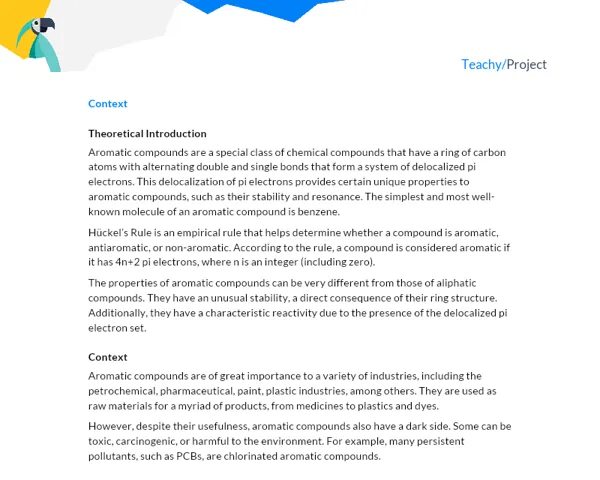Contextualization
Chemical Kinetics is the branch of chemistry that studies the speed at which chemical reactions occur and the factors that influence them. It is of utmost importance for areas such as the pharmaceutical industry, biochemistry, environmental chemistry, among many others, and is fundamental in our understanding of how chemical reactions take place. To understand chemical kinetics, we will need to analyze the Rate Law, which is essential in this study.
Understanding the Rate Law is fundamental in chemical kinetics, as it determines the speed at which a chemical reaction will occur. It is related to the concentration of the reactants and the order of the reaction. Reactions can be first, second, or third order, depending on the number of molecules that collide to make the reaction happen.
The Rate Law is expressed by the equation v = k[A]^m[B]^n, where v is the reaction rate, k is the rate constant, [A] and [B] are the concentrations of the reactants, and m and n are the exponents that express the order of the reaction.
Application of Chemical Kinetics in the Real World
Chemical kinetics is of extreme value in various areas of chemistry. For example, in the chemical industry, it is used to control the speed of chemical reactions in industrial processes, such as in the production of medications, plastics, food, etc.
In the health field, chemical kinetics is fundamental in studies of metabolism and the action of drugs in the body. Furthermore, chemical kinetics plays a vital role in the analysis of environmental chemical processes, such as pollutant degradation, gas reactions in the atmosphere, and many other processes.
Chemical kinetics is present in our daily lives, whether in the kitchen when we cook food or in our bodies, in the metabolic reactions that occur all the time.
Practical Activity: "Discovering the Reaction Rate Law of Potassium Permanganate Discoloration Reaction"
Project Objective
The objective of the practical activity is to allow students to understand the Rate Law through an experimental activity involving the potassium permanganate discoloration reaction. Students should determine the rate law of this reaction, make predictions and estimates, as well as apply the acquired knowledge to write a scientific report.
Detailed Project Description
Groups of students (3 to 5 members) must plan and execute a series of experiments to determine the order of the potassium permanganate discoloration reaction with oxalic acid (a common reaction in chemistry laboratories).
The project will be divided into two parts:
- Experimental Part: where students will perform the experiments in the laboratory.
- Theoretical and Writing Part: where students will write the report based on the results of the experiments.
Required Materials
- Potassium Permanganate Solution (KMnO4)
- Oxalic Acid Solution (H2C2O4)
- Beakers
- Stopwatch
- Analytical Balance
- Graduated Pipette
- Erlenmeyer Flasks
- Graduated Cylinder
- Spectrophotometer (if available)
Detailed Step-by-Step
- Prepare different solutions with varied concentrations of the two substances. The concentration of one of the substances should be kept constant while the other varies.
- Pour the solutions into Erlenmeyer flasks and start the timing. The reaction begins when the solutions are mixed.
- Time how long the solution takes to discolor. This will be the reaction time of the solution. Repeat the procedure for the different concentrations.
- Record all experimentally obtained data.
- Use the obtained data to build a graph of reaction time versus concentration of the reactant whose concentration was varied.
- From this graph, determine the order of the reaction.
Project Deliverables and Document Writing
Students must submit a report of the activity carried out containing the following sections:
- Introduction: Contextualization of Chemical Kinetics and Rate Law, the relevance and application in the real world, and the project's objective.
- Development: The theory involved in the project, a detailed description of the activity, the methodology used, and the presentation and discussion of the results. Include the tables and graphs constructed.
- Conclusion: Recapitulate the main points, explain what was learned, and the conclusions drawn about the potassium permanganate discoloration reaction.
- Bibliography: Sources consulted for the project.
In the document, students must clearly present the hypotheses raised, the predictions made, the experimental results, their interpretation of these results, and their conclusions about the Rate Law of the studied reaction. It is important for students to use the indicated bibliography to support the theoretical statements in the report.


